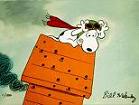From LST
Translated into WitP:
1a. CAP penalty for JN and/or CAP benefit for USN growing with time
1b. related to this, penalty for JN strike escorts (hand signals, few radios), none for USN
2. limit of numbers of a/c that can be launched per given time per carrier
3. limit on number of CVs that USN can operate in one TF early in the war
4. JN strikes tending to be bigger, but prone to miss the target entirely, USN strikes tending to split up in uncoordinated smaller strikes (some of which failing to find target)
From Nikademus
Prior to the war, the USN had no multi-carrier doctrine. Even coordination of a strike from a single carrier was subject to problems … Pearl Harbor is probably the best example of a massive and well coordinated set of strikes
…
Not all IJN "strikes" were suberb examples of coordination and not all USN strikes were discombobulated messes, but the tendancy for discoordination was far more likely with a USN strike, the more carriers involved the greater the chance vs an IJN group in 1942.
From TIMJOT
I believe the applicable "POINT" isnt the numbers of aircraft "LAUNCHED" but rather the number of aircraft put "ON TARGET" in a "COORDINATED" Strike.
…
Not sure it can be tied to pilot experience/moral, since at the same time USN suffered from strike coordination/cohesion there SBD pilots for example were quite good at placing bombs on target. So unless strike coordination/cohesion has a much higher experience requirement threshold than individual pilots tactical strike ability it would tieing it to experience/moral would really work.
Restatement.
There are several points of discussion on the table.
1. Whether the game should impose a limit on the number of carriers in a task force ( LST #3 ).
2. Whether the game should impose additional ( hard base + random# ) limits to the maximum number of planes one TF can launch ( without penalty ) based on the number of planes in the TF ( THE RULE ).
3. USN Carrier doctrine versus IJN as relates to number of carriers in one TF.
4. Relative ( and absolute ) abilities of USN and IJN carriers to launch coordinated strikes.
5. Issues with CAP over TFs.
For the moment I will not address #5 a number of other have done so and I’d like to limit the already too long length of this message – so I’ll skip #5 for now.
Note that #1 is essentially the game related end of #3 and #2 is essentially the game related version of #4.
So we really have 2 topics.
A. USN versus IJN Real Life constraints on # of CV in a TF and how to model in WITP.
B. USN versus IJN Real Life constraints on # of planes which can effectively strike from a CV TF and how to model in WITP.
Before resuming the data driven discussion I’d also like to point out a few intangibles that I haven’t seen anyone else raise yet. When we compare what happened historically to what can or should happen in the game – some things should be remembered.
i. We have more detail in English about the USN carrier operations than we do about the IJN carrier operations. At least 3 reasons for this. The victors write the history ( i.e. Americans are more interested and motivated to write down and to discuss the details … though certainly there have been Japanese who have done so ). More of the concerned parties on the Japanese side did not survive the war. We read in English and not all pertinent Japanese historical documents have been translated into English.
ii. The closer we look at carrier operations the more flaws we will see. Within every feat of accomplishment there are many rough spots that may not be visible from a distance … hence the expression “Don’t watch a Doctor being made”. This concept combined with (i) above means it is easy to be more critical of US operations because we have more detail and hence can more easily see the flaws.
iii. We can’t always match real life data to the game. For example at Coral Sea at the time the enemy strikes were received, the US carriers were 10 miles apart, the IJN carriers were 8 miles apart. Whether we say they were in two single carrier task forces or one 2 carrier task force – clearly their deployment was structurally very close and should probably be represented as the same in the game.
iv. Some times strikes will be launched at slightly different times or arrive at slightly different times – but it is problematic to determine when historical strikes should be modeled as separate strikes in the game and when they should be modeled as one strike. For example, at Midway, the Yorktown launched about an hour after the Enterprise and Hornet. Yet the Hornet’s SBD missed the IJN fleet and the Yorktown’s SBD arrived over the IJN fleet at essentially the same time as the Enterprise’s SBD. If we put the Hornet and Enterprise in a 2 CV taskforce and the Yorktown in a separate TF … in game terms we still probably want to have the Hornet’s strike miss and the Yorktown’s strike join up the Enterprise. And should all of the attacks which went in against KIDO BUTAI on the morning of the 4th of June be represented in game terms as one wave ? They hit over about a 90 minute time frame and totally about 200 aircraft ( from the 3 US carriers and Midway ). At least maybe.
v. Point of (iv and v) is that it is not always clear when a real world apparent multi-wave strike is a game multi-wave strike nor when a real world multi-carrier task force is a game one.
Ok, back to the data.
IJN early strikes.
Pearl Harbor – 183, 167
Darwin – 188
Tjilatjap – 180
Colombo – 180, 88(sea)
Trincomalee – 85, 90(sea)
Sources include Willmott “Empires in the Balance” [NIP]and Dull “Imperial Japanese Navy” [NIP]
Notice two patterns. When striking land bases, the 160-190 number used by KB. When striking mobile targets at sea – the 85-90 number is used.
Four carrier battles to be considered.
Coral Sea. IJN 2 CV, 1 CVL, USN 2 CV …
7 May
USN 93 Planes launched against Shoho, Japanese, 60 Planes launched against Neosho and 27 Planes launched in “night attack” that obtained no results.
8 May
USN 75 Planes launched against Shokaku, IJN 69 Planes Launched against Yorktown and Lexington. Shokaku damaged, Lexington sunk.
Midway. IJN 4 CV, USN 3 CV.
IJN 108 Planes Launched against Midway 36 planes were assigned to CAP leaving 126 planes for all other duties, thus an 80-90 plane anti-shipping strike capability remained as per the Ceylon attacks. Also after the American attacks 24 and 16 planes were launched in 2 waves from Hiryu against Yorktown.
USN 116 planes launched from Enterprise and Hornet while Yorktown launched 35. These strikes … while having some difficulty finding the enemy, destroyed 3 CV.
Eastern Solomons, IJN 2 CV, 1 CVL, USN, 2 CV
IJN 37 planes in first wave. 36 in the second which failed to find the US fleet.
USN 38 planes sank the Ryujo.
Santa Cruz. IJN 3 CV, 1 CVL
IJN - 62 and 44 and 29 in 3 waves, Hornet sunk.
USN – 74 planes in perhaps 3 waves. Damaged 1 CV and 1 CVL.
Had the Japanese launched “in time” at Midway, with the reserve force, the attack would have numbered around 100 planes.
Thus, I still see nothing to indicate THE RULE accurately reflects the historical data. The rule allows the Japanese to get 100% strikes by KB for up to about 4 CV and about 80% for all 6 CV. The US on the other hand suffer increasingly worse percentages if they increase the CV per TF over 1. Further the system is pretty tough on small strikes ( small being like 15-40 planes ) probably more so than history ... hence exarcerbating the gap between big strike capable forces and non-big strike capable forces to a greater extent than historically.
If it truly desired to restrict the number of CV per TF … then why not just have a rule that says attempting to add more than 1 ( or 2 … or 6 ) CV ( or CVL ) per TF is not allowed. That is much easier to code.
Also note that UV doesn’t have THE RULE. But instead uses lower USN experience levels to achieve the desired effect of indicating reduced US effectiveness vis-à-vis the IJN. Why was this abandoned ? In WITP the IJN CarDv 1 and 2 air crew are exp 90 with the USN carriers being average 85 and the IJN 5 Cardv being 80. In UV the USN were lower.
I still believe THE RULE should either apply evenly to both sides in 1942 or be removed.
CPT Hughes a USN Operations Researcher and Tactical Instructor has produced a model which represents accurately the results of the WWII carrier battles and his includes that 1942 capability “qualitatively” was even ( between the USN and the IJN ).
The results argue the same.
There are many factors to consider, Intel, Radar, training, experience, equipment, re-arming facilities, launching facilities, airborne command and control … but models which attempt to represent all of these factors, such as WITP, should be able to produce roughly historical results, fairly regularly with repeated tested with historical tactics. The current RULE prevents the game from doing that.


















